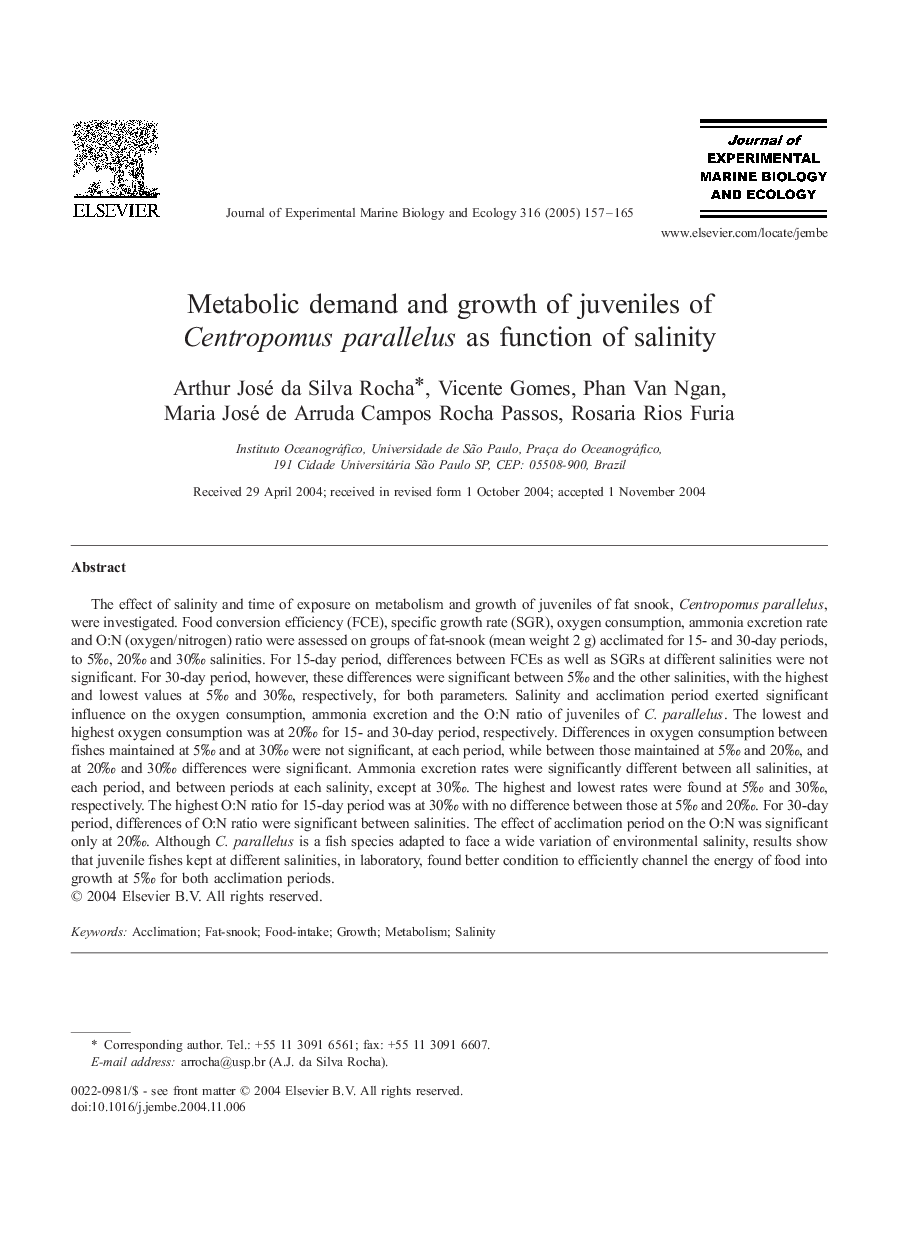| Article ID | Journal | Published Year | Pages | File Type |
|---|---|---|---|---|
| 9448890 | Journal of Experimental Marine Biology and Ecology | 2005 | 9 Pages |
Abstract
The effect of salinity and time of exposure on metabolism and growth of juveniles of fat snook, Centropomus parallelus, were investigated. Food conversion efficiency (FCE), specific growth rate (SGR), oxygen consumption, ammonia excretion rate and O:N (oxygen/nitrogen) ratio were assessed on groups of fat-snook (mean weight 2 g) acclimated for 15- and 30-day periods, to 5â°, 20â° and 30â° salinities. For 15-day period, differences between FCEs as well as SGRs at different salinities were not significant. For 30-day period, however, these differences were significant between 5â° and the other salinities, with the highest and lowest values at 5â° and 30â°, respectively, for both parameters. Salinity and acclimation period exerted significant influence on the oxygen consumption, ammonia excretion and the O:N ratio of juveniles of C. parallelus. The lowest and highest oxygen consumption was at 20â° for 15- and 30-day period, respectively. Differences in oxygen consumption between fishes maintained at 5â° and at 30â° were not significant, at each period, while between those maintained at 5â° and 20â°, and at 20â° and 30â° differences were significant. Ammonia excretion rates were significantly different between all salinities, at each period, and between periods at each salinity, except at 30â°. The highest and lowest rates were found at 5â° and 30â°, respectively. The highest O:N ratio for 15-day period was at 30â° with no difference between those at 5â° and 20â°. For 30-day period, differences of O:N ratio were significant between salinities. The effect of acclimation period on the O:N was significant only at 20â°. Although C. parallelus is a fish species adapted to face a wide variation of environmental salinity, results show that juvenile fishes kept at different salinities, in laboratory, found better condition to efficiently channel the energy of food into growth at 5â° for both acclimation periods.
Related Topics
Life Sciences
Agricultural and Biological Sciences
Aquatic Science
Authors
Arthur José da Silva Rocha, Vicente Gomes, Phan Van Ngan, Maria José de Arruda Campos Rocha Passos, Rosaria Rios Furia,
